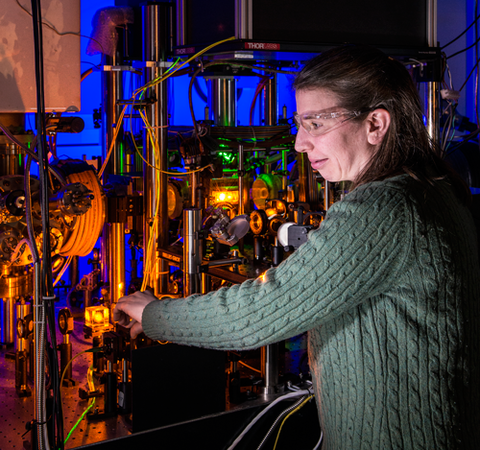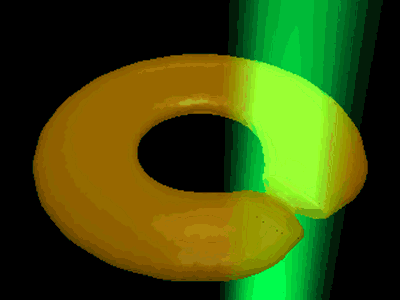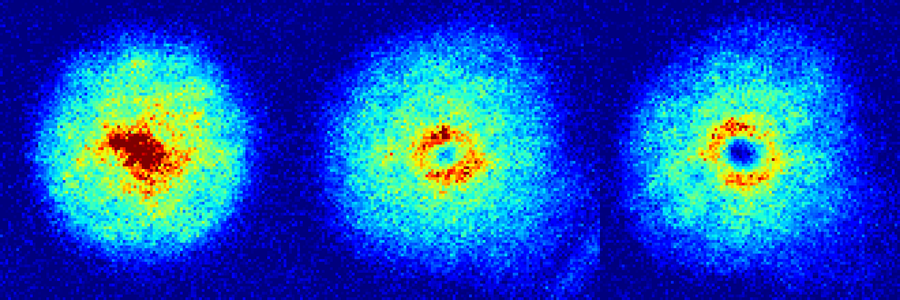
Project leader Gretchen Campbell with part of the experimental apparatus. The bright yellow glow at rear is produced by sodium atoms in a magneto-optical trap. These atoms form the BEC.
Scientists at NIST's Physical Measurement Laboratory and the NIST-sponsored Joint Quantum Institute (JQI), with collaborators elsewhere, have observed a phenomenon predicted by theory but never seen before in a superfluid Bose-Einstein condensate (BEC): hysteresis, which is also an essential property of many electronic systems. They report their findings in the Feb. 13 issue of Nature. For a detailed account of the work, see the JQI news article.
In hysteretic systems, changes in state are not symmetrically reversible. That is, one pathway is required to place the system in a new state, but simply reversing that pathway will not return the system to its original state.
Instead, a different pathway is required. A graph of both pathways forms a shape called a hysteresis loop. Thus the state of the system at any given instant depends critically on its history.
To observe this phenomenon, the scientists created a toroidal BEC containing approximately 400,000 ultracold sodium atoms. The atoms were "stirred" into superfluid rotation by penetrating the BEC vertically with a green laser beam about 8 micrometers wide, which produces a low-density barrier. The beam was moved radially around the ring to induce flow. The beam could be adjusted for rotation rate and intensity.
Flow velocity in the BEC ring is quantized, and the researchers determined the conditions required to place the atoms in the first stable excited state. This occurs as an abrupt transition when the stir rate reaches a critical value.

That kind of controllability is an essential factor if such systems are to be used in "atomtronic" devices in which information is embodied in the properties of atoms rather than electrical charge states, as in conventional electronic systems. Many of those systems exhibit hysteresis. A well known example is the magnetic hysteresis in computer hard disk drive. Variations on the BEC ring could, for example, eventually form the basis for inertial sensors, magnetometers, and other practical devices, as well as serving as a two-state memory system or noise filter in atomtronic circuits.
The project, led by Gretchen Campbell of the Quantum Measurement Division's Laser Cooling and Trapping Group, had earlier observed quantized rotation in a toroidal BEC, and identified ways to place the system in a desired quantum state. The latest work builds on that accomplishment.


